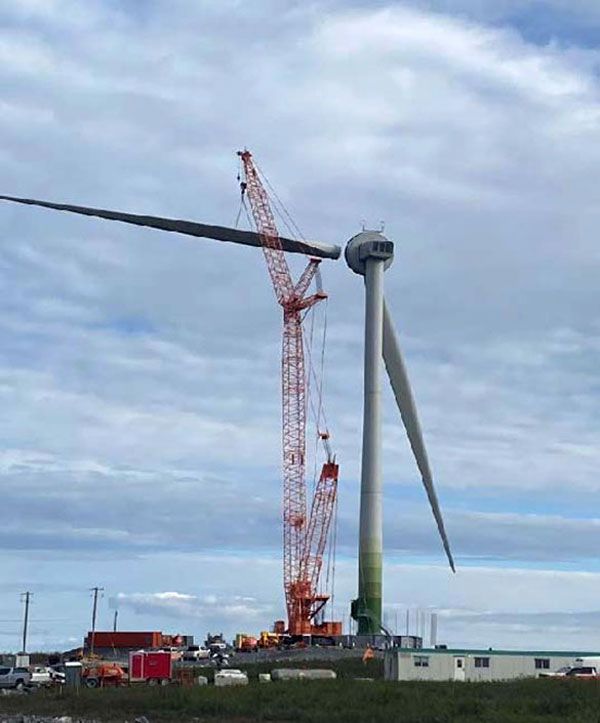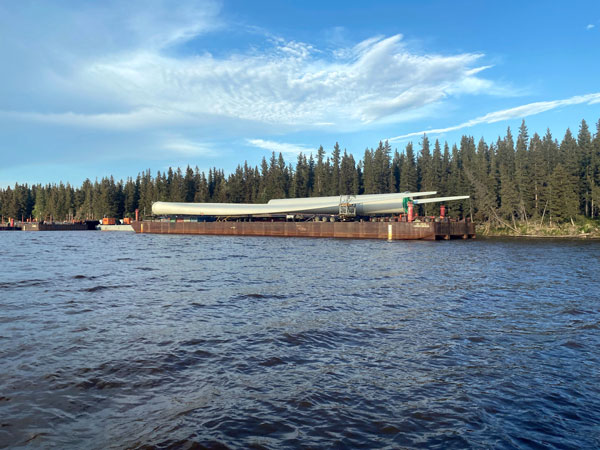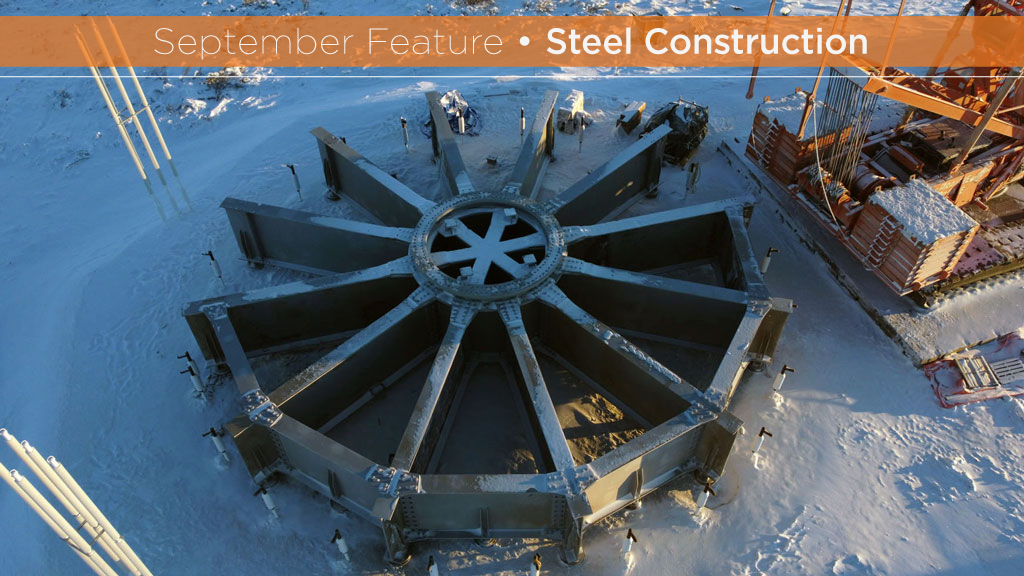In mid-September, Inuvik celebrated the first power produced by a 3.5-megawatt wind turbine rising 150 metres into the sky about 12 kilometres east of the town of 3,000 people.
At this northern location, construction and assembly of the tower proved less challenging than transporting the massive steel blades and tower components to this Northwest Territories (N.W.T.) community.

NWT has been considering the role of wind power in the region for more than a decade to reduce reliance on costly fossil fuels and reduce the territory’s carbon footprint.
The project was developed by NT Energy, a sister company of the Northwest Territories Power Corporation (NTPC) focusing on renewable and low-carbon energy projects. The Inuvik High Point Wind Project received initial funding in 2018 with $30 million from the federal government and an additional $10 million contribution from the N.W.T. government — although the overall budget for the project has since risen to about $70 million.
Inuvik is served by two power plants, one operating on liquefied natural gas (LNG) and the other on diesel. LNG is delivered by truck from northern British Columbia.
“There are times when the ferries are out of service because of ice break-up or freeze-up and that results in disruptions in the supply of LNG,” says Alex Love, chief projects and engineering officer with NTPC. “We then use diesel to make up the shortfall. Any reduction in buying imported fuel translates into cost reduction for operating power plants.”
Project preparation included construction of an access road; sinking steel piles into the ground; installing thermosyphons to ensure that permafrost could be maintained; and installing distribution lines to connect the tower to the grid. A new transformer and battery storage system were also installed at NTPC’s power plant in Inuvik.
“The maximum power output of the tower is large compared to the output of the power plant and electrical load, so battery storage is required to smooth out power production if the tower is overproducing,” Love says.

Steel components for the wind turbine were ordered from German company Enercon in 2019 and were delivered to Canada by ship, arriving in the Hay River shipyards in 2021. The components were stored, then barged on the Mackenzie River by Marine Transportation Services to storage in Inuvik in summer 2022. The components were ultimately delivered by truck to their final destination a few kilometres away.
The turbine’s steel base arrived at the site first and was installed in late 2022, with other components delivered beginning in May 2023. Love notes delivery of the 67-metre-long steel turbine blades by lengthy trucks could only be accommodated on relatively straight roads.
“The trailer on the truck was separately steerable so they could navigate around the corners and curves,” he says.
The four segments of the tower and the turbine and hub were raised by a crane brought in from Alberta and bolted together by contractor Black & McDonald. In June, the three blades were bolted to the hub in turn.
“The way the project was designed by Enercon for quick onsite assembly was impressive,” Love says. “We were able to bolt on each of the three turbine blades inside of one day each, except for a slight delay during one windy day, and the entire assembly took a shade over a week.”
Sensors, instrumentation, controls and wiring were connected and checked through September. Engineering services and system integration were handled by Hatch Engineering.
The wind project is expected to reduce diesel consumption in the N.W.T.’s largest diesel-powered community by 30 per cent. Greenhouse gas emissions could also be reduced by as many as 6,000 tonnes annually.
“We’re pretty happy to have seen the major milestone of that first trickle of power in mid-September,” Love says. “If all goes well, we’ll have fully commissioned the system by the beginning of October. We’ve overcome significant challenges in bringing this complex project to completion. We hope that delivering solid performance from this wind turbine will see other communities in the north also move forward with renewable energy systems.”






Recent Comments
comments for this post are closed